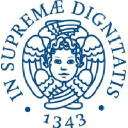Benchmarking and Improving Generator-Validator Consistency of Language Models
As of September 2023, ChatGPT correctly answers "what is 7+8" with 15, but when asked "7+8=15, True or False" it responds with "False". This inconsistency between generating and validating an answer is prevalent in language models (LMs) and erodes trust. In this paper, we propose a framework for measuring the consistency between generation and validation (which we call generator-validator consistency, or GV-consistency), finding that even GPT-4, a state-of-the-art LM, is GV-consistent only 76% of the time. To improve the consistency of LMs, we propose to finetune on the filtered generator and validator responses that are GV-consistent, and call this approach consistency fine-tuning. We find that this approach improves GV-consistency of Alpaca-30B from 60% to 93%, and the improvement extrapolates to unseen tasks and domains (e.g., GV-consistency for positive style transfers extrapolates to unseen styles like humor). In addition to improving consistency, consistency fine-tuning improves both generator quality and validator accuracy without using any labeled data. Evaluated across 6 tasks, including math questions, knowledge-intensive QA, and instruction following, our method improves the generator quality by 16% and the validator accuracy by 6.3% across all tasks.












